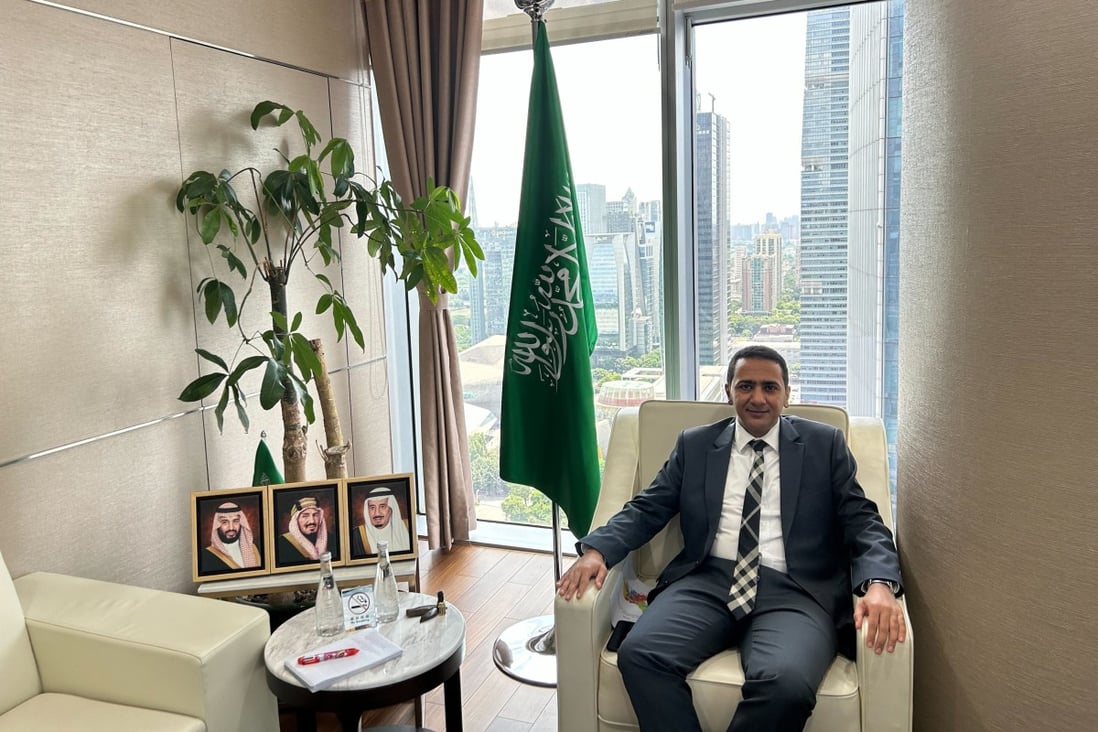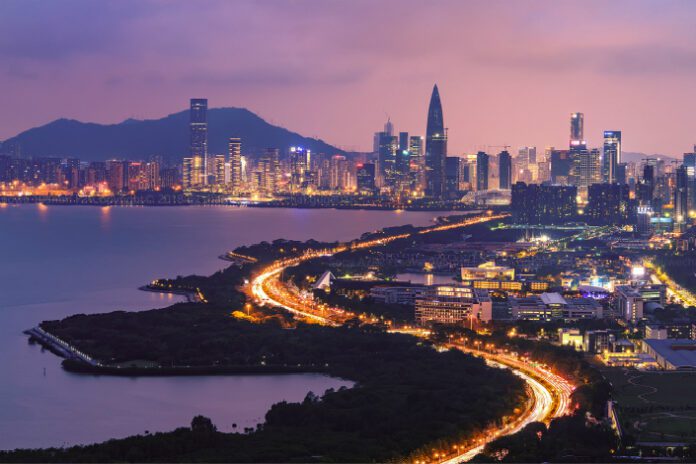- Saudi Arabia’s top diplomat in southern China says the Greater Bay Area will be ‘the future of Asia’
- Abdullah Bin Abiyah also addresses three key problems that must be overcome when doing business in an economic and business hub with multiple currencies
China’s Greater Bay Area development zone is of growing interest to Saudi Arabian investors who are looking to tap into the southern economic and business hub that they believe will be “the future of Asia”, according to the consul general of Saudi Arabia in Guangzhou.
The geographical location of the Greater Bay Area and its economic contributions to China, coupled with Beijing’s goal of turning it into “the world’s technology centre”, make the region a go-to destination for foreign investors, Abdullah bin Abiyah told the Post.
“There is international infrastructure in the Greater Bay Area, which provides convenience to foreigners to live and work there,” the top diplomat added. “In the same bay area, Shenzhen is the tech city, Hong Kong is the financial city and Macau is the culture city.”
Abiyah said that “the future of Asia” is the Greater Bay Area, which will also contribute a lot economically to the Belt and Road Initiative.

Abdullah bin Abiyah is the consul general of Saudi Arabia in Guangzhou. Photo: Kandy Wong
China’s Greater Bay Area development zone is of growing interest to Saudi Arabian investors who are looking to tap into the southern economic and business hub that they believe will be “the future of Asia”, according to the consul general of Saudi Arabia in Guangzhou.
The geographical location of the Greater Bay Area and its economic contributions to China, coupled with Beijing’s goal of turning it into “the world’s technology centre”, make the region a go-to destination for foreign investors, Abdullah bin Abiyah told the Post.
“There is international infrastructure in the Greater Bay Area, which provides convenience to foreigners to live and work there,” the top diplomat added. “In the same bay area, Shenzhen is the tech city, Hong Kong is the financial city and Macau is the culture city.”
Abiyah said that “the future of Asia” is the Greater Bay Area, which will also contribute a lot economically to the Belt and Road Initiative.
Beyond crude oil, is China the ‘ideal partner’ for Middle East development?1 Jun 2023
Beijing intends to turn the area – which includes nine cities in Guangdong province and the two special administrative regions of Hong Kong and Macau – into an economic powerhouse by 2035 that surpasses the economic sizes of Tokyo Bay, the New York Metro Area and the San Francisco Bay Area.
“If companies ask us where they should bet their money in China, we’ll say the Greater Bay Area,” Abiyah said. “The region will be competitive in the future compared with other bay areas, with its vast population.”
The Greater Bay Area has a population of more than 80 million people and accounts for about one-tenth of China’s economic output.
“The Saudi Arabian consulate in Guangzhou reached out to the Guangdong government to get some ideas about the investment opportunities in the Greater Bay Area,” Abiyah said, and authorities responded by giving them “more than 600 projects for consideration”.
“We screened [the projects] and are communicating with our business associations about promoting these items,” he explained.
Last month, China and Saudi Arabia signed 30 cooperation agreements in Riyadh with a total value of US$10 billion, and these deals spanned across sectors such as renewable energy, agriculture, real estate, mining, supply chains, tourism and medical services.
Peng Peng, executive chairman at the Guangdong Society Reform, a think tank connected to the provincial government, said Saudi Arabia is playing the balancing act with the West by cooperating with China.
“In that case, the Greater Bay Area is a good choice,” he added. “This will also provide new opportunities for the Greater Bay Area. At least there is more capital at a time when confidence and expectations of companies are pretty weak.”
Peng pointed to Guangdong’s fostering of 20 strategic industrial clusters across the province, noting that these will present investors – including from Saudi Arabia – a chance to invest in next-gen tech and critical materials, including AI and semiconductors.
Cindy Huang, a veteran sales director of high-end serviced offices in Shenzhen’s central business district, said that the withdrawal of foreign investors over the past few years negatively affected the renting market for top-tier workspaces.
“We do look forward to having capital from the Middle East, like Saudi Arabia, and we’ll seize the opportunities to secure some new customers to replace those who have left,” she added.
The bilateral relationship between China and Saudi Arabia is at its peak now
Abdullah bin Abiyah
Abiyah estimated that collaboration between China and Saudi Arabia will focus on technological developments in the future, in addition to traditional cooperation in sectors such as energy, industrial, oil and infrastructure.
“The other areas that both sides will enhance partnerships are innovation, green energy and retailing,” he added. “These sectors will also help boost business for the small and medium-sized companies.”
In March, Saudi Arabia’s King Abdullah University of Science and Technology signed cooperation contracts with a number of universities in southern China that focused on talent training and innovative start-ups.
“The bilateral relationship between China and Saudi Arabia is at its peak now,” Abiyah said. “Companies in Saudi Arabia have the main goal of investing in China. There are a lot of Chinese companies producing goods in Saudi Arabia or importing products from China. Some Saudi Arabian logistics companies may want to tap the Chinese market in the future.”
Despite the estimated booming development, Abiyah added that tax arrangements, beneficial policies and the alignment of different currencies between Guangdong, Hong Kong and Macau remain problems in the Greater Bay Area.
“I believe that these issues can be resolved by 2025,” he said. “I attended an annual conference about the Greater Bay Area in Nansha, and participants discussed these obstacles. We’ll continue taking part in this meeting by the end of the year, when we’ll see the progress of applying resolutions.”
Yu Lingqu, vice-director of the Centre for Financial Studies at the China Development Institute, said that American venture capital firms such as Sequoia Capital and IDG are still the most active in the Shenzhen market.
“Funds from the United States have a greater ability to grab resources for innovative development at higher professional levels, in terms of post-investment management and a Nasdaq listing,” he added. “In these areas, the Middle East funds have yet to prove themselves.”
Courtesy: South China Morning Post




